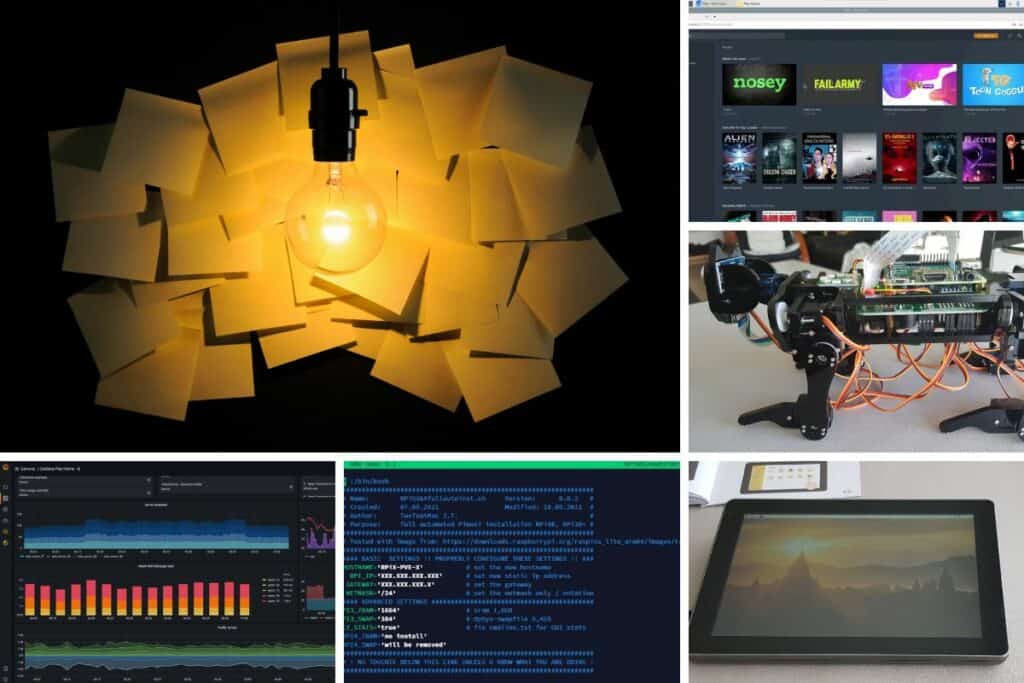Imagine a world where you can control your entire home automation system from the comfort of your couch or even when you're miles away. Sounds like a dream, right? Well, thanks to Raspberry Pi, that dream is now a reality. With the best Raspberry Pi remote IoT free solutions at your fingertips, you can transform your home into a smart hub without breaking the bank. Whether you're a beginner or a seasoned tech wizard, this guide is your ultimate companion to unlocking the full potential of remote IoT with Raspberry Pi.
Now, let's dive into why Raspberry Pi has become the go-to choice for DIY enthusiasts worldwide. It's not just about the affordable hardware; it's also about the endless possibilities that come with it. From setting up a remote-controlled thermostat to monitoring your garden's soil moisture, the Raspberry Pi ecosystem offers a treasure trove of tools and resources. And the best part? Many of these solutions are completely free!
But hold up—before you jump into the deep end, there are a few things you need to know. This article will walk you through everything from setting up your Raspberry Pi for remote IoT to exploring the best free software options available. So, grab your favorite beverage, and let's get started on this exciting tech journey!
Read also:Frankie Sixx The Rising Star Taking The Music World By Storm
Table of Contents
- Introduction to Raspberry Pi and Remote IoT
- Raspberry Pi Basics: What You Need to Know
- Benefits of Using Raspberry Pi for Remote IoT
- Step-by-Step Setup Process
- Top Free Software Options for Raspberry Pi Remote IoT
- Common Issues and Troubleshooting Tips
- Security Tips for Your Raspberry Pi IoT Setup
- Creative Project Ideas Using Raspberry Pi Remote IoT
- Leveraging Community Support for Your Projects
- Conclusion and Next Steps
Introduction to Raspberry Pi and Remote IoT
Alright, let's start with the basics. What exactly is Raspberry Pi, and why is it such a big deal in the world of remote IoT? Well, Raspberry Pi is essentially a tiny computer that you can use to run all sorts of applications, from media centers to complex automation systems. It's small, affordable, and packed with features that make it perfect for DIY projects. When it comes to remote IoT, Raspberry Pi shines because of its ability to connect to the internet and interact with other devices seamlessly.
Now, you might be wondering, "What's so special about remote IoT?" Remote IoT allows you to monitor and control devices from anywhere in the world. Whether it's adjusting your home's temperature, turning on a light, or even checking your pet cam, remote IoT puts the power in your hands. And the best part? With Raspberry Pi, you can do all of this without spending a fortune on expensive hardware or proprietary software.
Raspberry Pi Basics: What You Need to Know
Understanding the Hardware
Before we dive into the software side of things, it's essential to understand the hardware that powers Raspberry Pi. The latest models, like the Raspberry Pi 4, come equipped with a powerful processor, multiple USB ports, and even built-in Wi-Fi and Bluetooth. This makes it incredibly versatile for a wide range of applications. Plus, with a plethora of accessories available, you can customize your setup to suit your specific needs.
Choosing the Right Model
Not all Raspberry Pi models are created equal. Depending on your project requirements, you might want to choose a specific model. For example, if you're working on a lightweight project, the Raspberry Pi Zero W might be sufficient. On the other hand, if you're planning something more complex, the Raspberry Pi 4 with 4GB or 8GB of RAM would be a better fit.
Benefits of Using Raspberry Pi for Remote IoT
So, why should you choose Raspberry Pi for your remote IoT projects? There are several compelling reasons:
- Cost-Effective: Raspberry Pi is incredibly affordable compared to other single-board computers on the market.
- Open Source: With a vast array of open-source software available, you can customize your setup to perfection.
- Community Support: The Raspberry Pi community is massive, and you'll find tons of tutorials, forums, and resources to help you along the way.
- Scalability: Whether you're building a small home automation system or a large-scale industrial solution, Raspberry Pi can grow with your needs.
And let's not forget the flexibility. You can use Raspberry Pi for everything from simple automation tasks to complex machine learning projects. The possibilities are truly endless!
Read also:Is Victoria Verstappen Married Unveiling The Personal Life Of A Racing Legend
Step-by-Step Setup Process
Alright, let's get down to business. Here's a step-by-step guide to setting up your Raspberry Pi for remote IoT:
- Install the Operating System: Start by downloading the Raspberry Pi Imager and installing your preferred operating system, such as Raspberry Pi OS.
- Configure Wi-Fi: Make sure your Raspberry Pi is connected to your network by configuring Wi-Fi settings.
- Enable SSH: SSH (Secure Shell) allows you to remotely access your Raspberry Pi from another device. You can enable it through the Raspberry Pi Configuration tool.
- Set Up Your IoT Software: Choose a free IoT platform like Home Assistant or Node-RED to manage your devices.
- Test Your Setup: Once everything is configured, test your setup to ensure everything is working as expected.
And there you have it—a simple yet effective setup process for your Raspberry Pi remote IoT project.
Top Free Software Options for Raspberry Pi Remote IoT
Home Assistant
Home Assistant is one of the most popular free software options for Raspberry Pi remote IoT. It allows you to control all your smart home devices from a single interface. With its extensive plugin ecosystem, you can integrate everything from smart lights to security cameras.
Node-RED
Node-RED is another fantastic option for those who prefer a more visual approach to programming. It uses a flow-based editor, making it easy to create complex workflows without writing a single line of code. Plus, it integrates seamlessly with Raspberry Pi, making it a top choice for remote IoT projects.
Mosquitto
If you're looking for a lightweight messaging broker, Mosquitto is the way to go. It implements the MQTT protocol, which is perfect for IoT applications. With Mosquitto, you can send and receive messages between devices effortlessly.
Common Issues and Troubleshooting Tips
Even the best-laid plans can go awry sometimes. Here are some common issues you might encounter when setting up your Raspberry Pi remote IoT system and how to fix them:
- Wi-Fi Connectivity Issues: Make sure your Wi-Fi credentials are correct and try resetting your router if necessary.
- SSH Not Working: Double-check that SSH is enabled and try restarting your Raspberry Pi.
- Software Compatibility Issues: Ensure that all your software is up to date and consult the official documentation for troubleshooting tips.
And remember, the Raspberry Pi community is always there to lend a helping hand if you get stuck.
Security Tips for Your Raspberry Pi IoT Setup
With great power comes great responsibility. When you're setting up a remote IoT system, security should be your top priority. Here are some tips to keep your setup safe:
- Use Strong Passwords: Avoid using default passwords and opt for strong, unique ones instead.
- Enable Firewall: A firewall can help protect your Raspberry Pi from unauthorized access.
- Keep Software Updated: Regularly update your software to patch any security vulnerabilities.
By following these simple tips, you can ensure that your Raspberry Pi remote IoT setup remains secure and reliable.
Creative Project Ideas Using Raspberry Pi Remote IoT
Now that you have the basics down, let's talk about some exciting project ideas to get your creative juices flowing:
- Smart Garden: Monitor and control your garden's watering system from anywhere in the world.
- Home Security System: Set up a DIY security camera system with motion detection and remote access.
- Energy Monitoring: Track your home's energy usage and optimize your consumption for maximum efficiency.
These are just a few ideas to get you started. The sky's the limit when it comes to Raspberry Pi remote IoT projects!
Leveraging Community Support for Your Projects
One of the greatest advantages of using Raspberry Pi for your remote IoT projects is the vast community of enthusiasts who are more than willing to help. Whether you're stuck on a particular issue or just looking for inspiration, there's no shortage of resources available. From forums like Reddit's r/raspberry_pi to official documentation and tutorials, the community is your best ally in your tech journey.
Conclusion and Next Steps
In conclusion, Raspberry Pi offers an incredible platform for exploring the world of remote IoT. With the best Raspberry Pi remote IoT free solutions at your disposal, you can create innovative projects that enhance your everyday life. From setting up a smart home to building complex automation systems, the possibilities are endless.
So, what are you waiting for? Grab your Raspberry Pi, dive into the world of remote IoT, and start creating. And don't forget to share your experiences and projects with the community. Together, we can push the boundaries of what's possible with Raspberry Pi!
Got any questions or feedback? Drop a comment below, and let's keep the conversation going. Happy tinkering, and see you on the next tech adventure!



